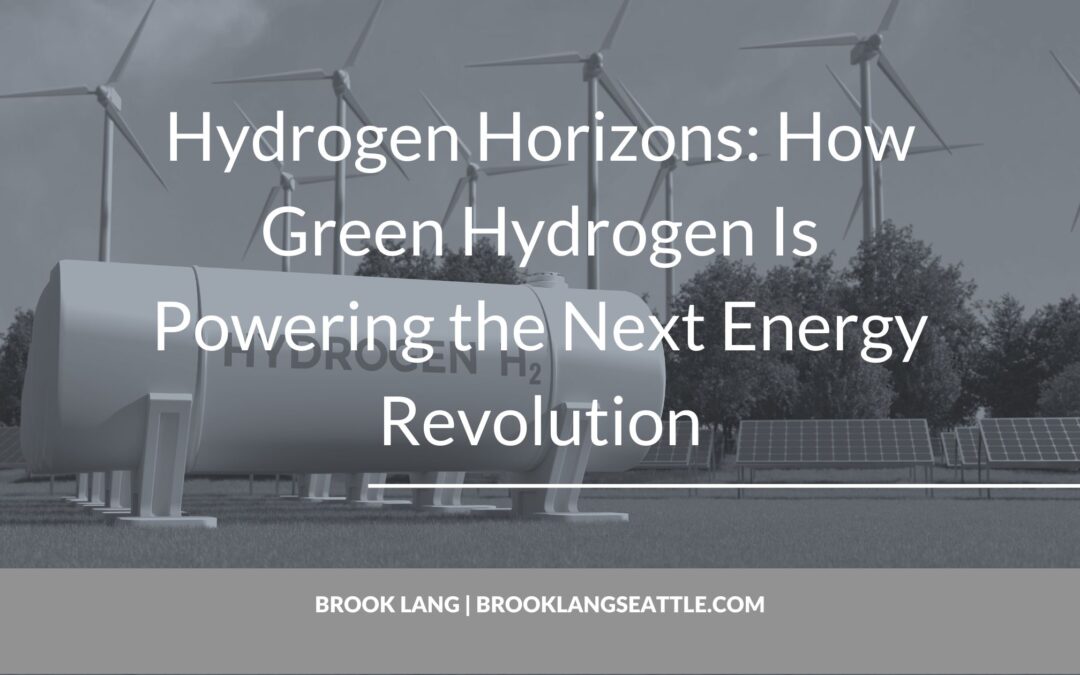As the world races to decarbonize, hydrogen has emerged as a key player in the future of clean energy. Unlike fossil fuels, hydrogen emits no greenhouse gases when used as fuel—only water vapor. While hydrogen can be produced in multiple ways, green hydrogen, made using renewable energy sources, represents the most sustainable pathway. It offers a versatile, zero-emission solution that can transform industries, transportation, and cities worldwide.
What Is Green Hydrogen?
Green hydrogen is produced through electrolysis, a process that uses renewable electricity from sources like solar or wind to split water into hydrogen and oxygen. Unlike gray or blue hydrogen, which rely on natural gas and carbon capture, green hydrogen leaves no carbon footprint.
Because the process requires renewable power, the scalability of green hydrogen is closely tied to the expansion of clean energy infrastructure. As costs of solar and wind continue to fall, producing green hydrogen becomes increasingly viable.
Applications Across Sectors
One of the most exciting aspects of green hydrogen is its versatility. It can power industries and applications that are otherwise difficult to decarbonize.
-
Heavy industry: Steel, cement, and chemical manufacturing require high heat and processes that electricity alone cannot easily replace. Green hydrogen can serve as a clean fuel alternative.
-
Transportation: Hydrogen fuel cells are particularly promising for heavy-duty trucks, buses, trains, and even ships—vehicles where battery weight and charging limitations pose challenges.
-
Energy storage: Green hydrogen can store excess renewable energy and feed it back into the grid when needed, making it an ideal complement to intermittent solar and wind power.
-
Urban heating: Hydrogen can be blended with natural gas or used directly in hydrogen-ready boilers, reducing emissions from heating systems in cities.
Global Momentum
Countries worldwide are investing heavily in hydrogen strategies. The European Union has pledged billions toward scaling green hydrogen infrastructure, aiming to decarbonize industries and transport by 2030. In Asia, Japan and South Korea are pioneering hydrogen-powered vehicles and infrastructure. Meanwhile, the United States is funding regional hydrogen hubs to test large-scale production and distribution.
Private companies are also accelerating innovation. Automakers like Toyota and Hyundai are developing hydrogen fuel cell vehicles, while energy giants are investing in electrolyzers and pipelines. Together, these initiatives are laying the foundation for a global hydrogen economy.
Challenges to Overcome
Despite its promise, green hydrogen faces obstacles. Electrolysis remains energy-intensive, and the cost of producing green hydrogen is still higher than fossil fuel alternatives. Infrastructure—pipelines, storage facilities, and fueling stations—must be built to support widespread adoption. Safety and regulatory standards also need to be clearly defined.
However, with increasing government support, falling renewable costs, and technological advances, these barriers are steadily shrinking. Analysts predict that green hydrogen could become cost-competitive within the next decade.
A New Energy Revolution
Green hydrogen is more than just a fuel—it’s a bridge to a cleaner, more resilient future. By powering industries, vehicles, and cities without carbon emissions, it has the potential to reshape the global energy landscape. As innovation accelerates, green hydrogen stands at the horizon of the next energy revolution—one where sustainability, resilience, and innovation drive progress.
